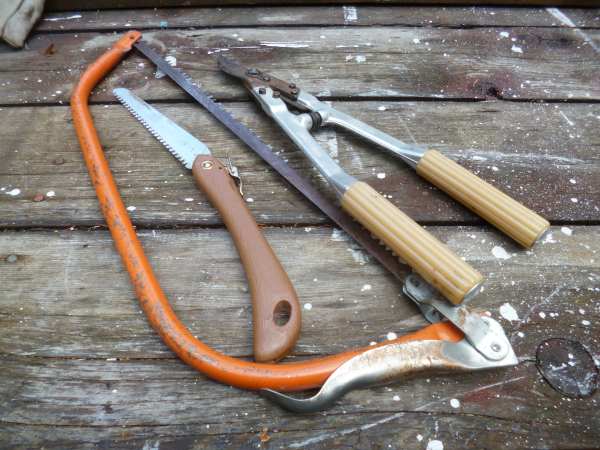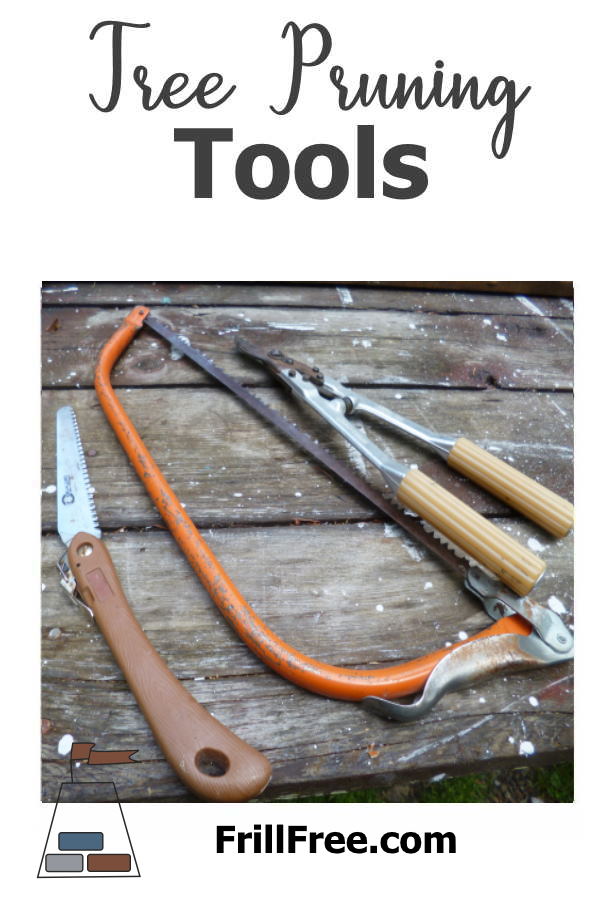- Homesteading
- How to Grow Organic Fruit
- Tree Pruning Tools
Tree Pruning Tools
Sharper Tools Mean Less Damage to the Tree
I am a participant in the Amazon Services LLC Associates Program, an affiliate advertising program designed to provide a means for me to earn fees by linking to Amazon.com and affiliated sites. Other links on this site may lead to other affiliates that I'm associated with.
Sharp, good quality tools are a must if you're going to prune your own trees. As you're not going to let the trees get out of control, you won't need a chain saw or anything other than loppers, a pruning saw, bow saw and pruners.
I keep all my pruning tools sharp - there is no point in attempting
to prune a tree only to find a couple of years later that they can't
heal from the damage inflicted on them by poorly maintained tools.
Here are a few of the most used tools in my pruning tool kit;
 Tree Pruning Tools - loppers, bow saw and folding pruning saw
Tree Pruning Tools - loppers, bow saw and folding pruning sawThe bow saw is very economical, and good for rough cutting; this is not good for surgical cuts, but is great for lopping off large branches which you will fine tune with the folding saw. This has fine teeth, and cuts on the back stroke, making it easy to handle in the tree canopy.
It folds up into the handle, which is super useful if you're tramping through the bush. I use this saw when I'm wildcrafting too, to cut willows.
Loppers
like these are called bypass loppers, with a blade that passes by to
cut, not an anvil type which can crush and damage the delicate bark.
Keeping them clean is relatively quick; after using the tools, wipe them with a rag soaked in rubbing alcohol, or dip the blades into a cup with isopropyl alcohol in to disinfect them.
If you're dealing with a diseased tree, do this after each cut.
Labor intensive, I know, but well worth the effort so you don't transfer pathogens throughout the tree.
A shot of WD40 or other spray lubricant will keep the rust from forming, and keep all moving parts free. Wipe with steel wool to remove any rust. Store in a dry place until the next pruning session.















